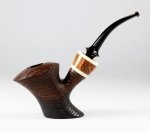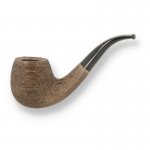Fairly new here but I had some morning musings which got me thinking - be great to see what you guys think...
I’m a hobbyist Wood butcher and I’m about to start my first Pipe project - nothing fancy, just a pre-drilled kit (in case I make a right mess). Got me wondering though, why briar?
To be more exact, why briar most of the time? I get the wood has a natural fire resistance, but isn’t that related to its density and hardness? On the janka scale, briar’s about there with hickory, pear, apple, boxwood less hard than ebony and lignum (but an ebony/lignum pipe might cost a bomb...).
I may have answered my own question there on the cost vs appearance side of things, but you can get some lovely figured wood comparable to briar’s hardness; I just wonder why I don’t see it used more often?
I’m a hobbyist Wood butcher and I’m about to start my first Pipe project - nothing fancy, just a pre-drilled kit (in case I make a right mess). Got me wondering though, why briar?
To be more exact, why briar most of the time? I get the wood has a natural fire resistance, but isn’t that related to its density and hardness? On the janka scale, briar’s about there with hickory, pear, apple, boxwood less hard than ebony and lignum (but an ebony/lignum pipe might cost a bomb...).
I may have answered my own question there on the cost vs appearance side of things, but you can get some lovely figured wood comparable to briar’s hardness; I just wonder why I don’t see it used more often?












